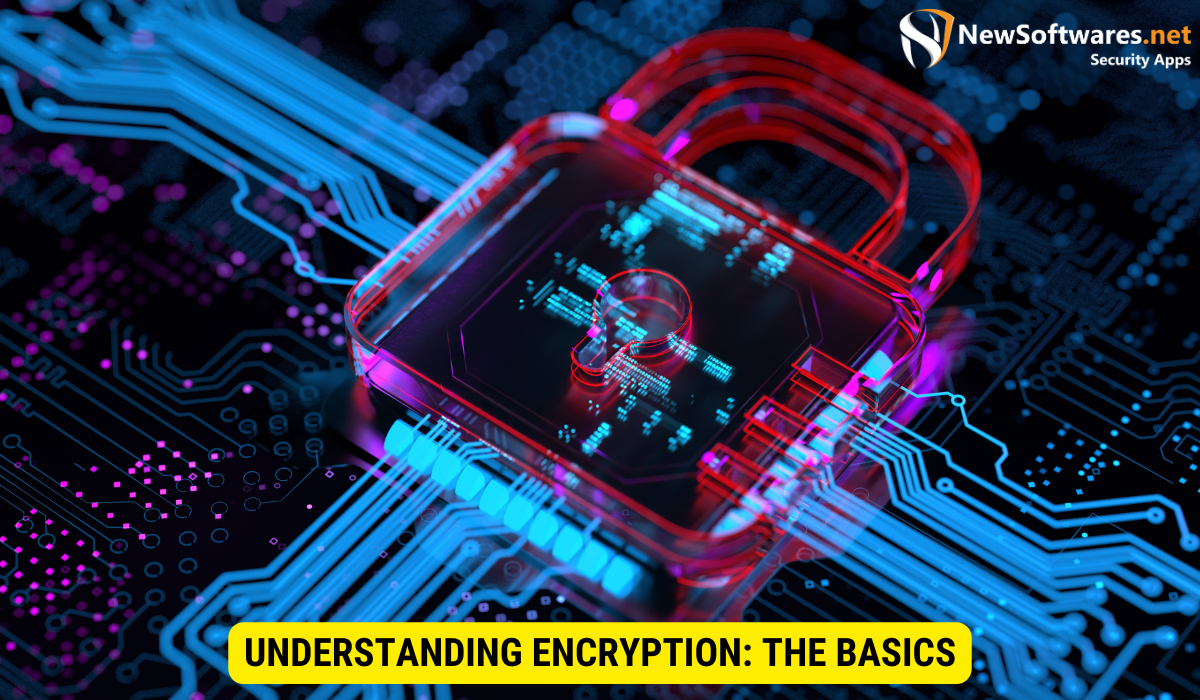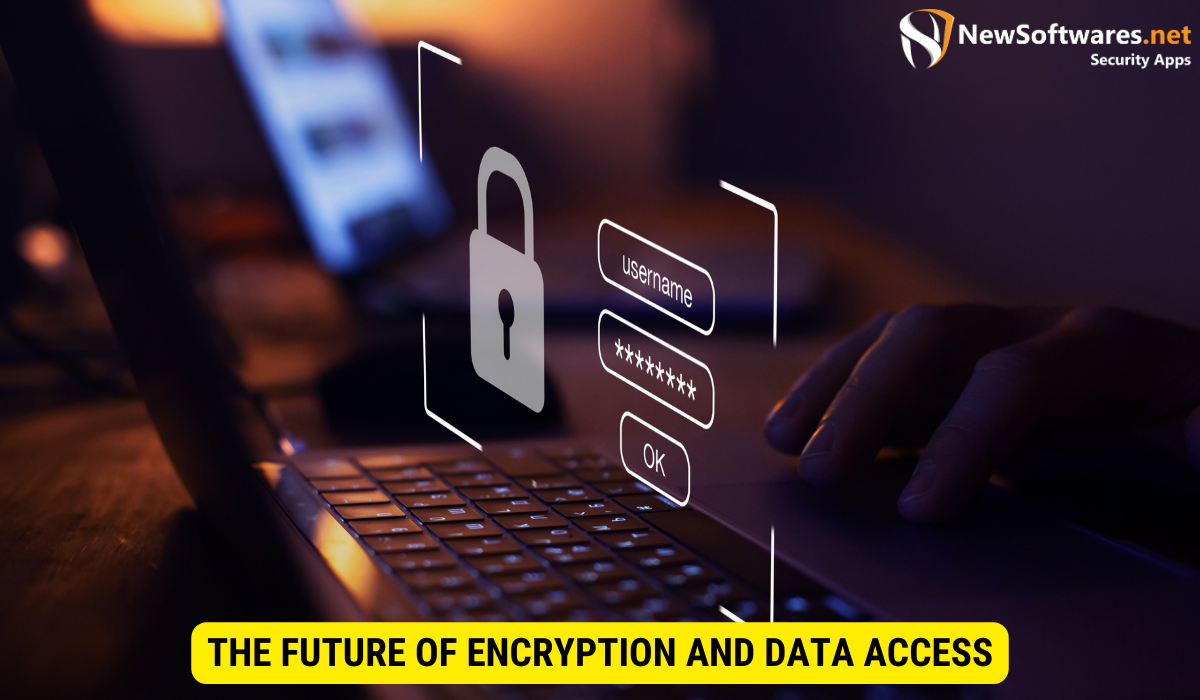Accessing encrypted data involves using decryption keys to reverse the encryption process, making it readable for authorized users.
Data encryption has a crucial task in ensuring the security and confidentiality of receptive information in today’s digital world. With cyber threats becoming increasingly sophisticated, understanding the process of accessing encrypted data is essential. Together, we will dive deep into the world of encryption, exploring its basics, the encryption process, the decryption process, challenges associated with accessing encrypted data, and the future of encryption and data access.
Understanding Encryption: The Basics

Encryption is the process to transform simple text or data into an illegible format acknowledged as ciphertext, using an encryption algorithm & an encryption passphrase. The purpose of encryption is to protect data from illegal access, ensuring that even if intercepted, the data remains indecipherable.
When it comes to encryption, there are two major types: symmetric encryption and asymmetric encryption. Symmetric encryption uses a solo key for both the encryption and decryption processes. This means that the same key is used to both lock and unlock the data. On the other hand, asymmetric encryption uses a duo of keys – a public key for encryption and a private key for decryption. The public key is freely obtainable to anyone, while the confidential key is kept secret by the owner.
What is Encryption?
Encryption is a method of transforming data using mathematical algorithms to make it unreadable by anyone who does not have the correct key to decode it. The encryption key acts as the digital lock, allowing authorized individuals to access the data.
One of the most commonly used encryption algorithms is the Advanced Encryption Standard (AES).This is a symmetric encryption algorithm which uses a block cipher to encrypt & decrypt data. It is widely adopted and considered secure for protecting sensitive information.
Importance of Encryption in Data Security
Encryption plays a vital role in protecting important information, such as personal data, passwords, financial records, and confidential business data. By encrypting data, organizations and individuals can lessen the threats linked with data breaches, unauthorized access, and data theft.
Without encryption, sensitive information would be weak to interception and misuse. Imagine a situation where an invader gains unauthorized access to a database containing personal information of thousands of individuals. Without encryption, the attacker would be able to read and exploit the data, potentially causing significant harm to the individuals affected.
Encryption provides an extra layer of protection, making it extremely difficult for attackers to make sense of the intercepted data. Even if they manage to obtain the encrypted data, they would still need the encryption key to decrypt it. This adds a significant barrier, as the encryption key is typically kept separate from the encrypted data.
Furthermore, encryption is not only important for protecting data at rest but also during transmission. When data is transmitted over networks, such as the internet, it is susceptible to interception. Encryption ensure that even if the data is intercepted, it remains unreadable to unauthorized parties.
In the end, encryption is a fundamental aspect of data security. It provides a means to protect sensitive data from illegal access and ensures the confidentiality and integrity of data. By understanding the basics of encryption and implementing robust encryption practices, individuals and organizations can improve their overall security posture and defend their valuable data.
The Process of Data Encryption
The process of data encryption involves two primary steps: key generation and data transformation.
Data encryption is a fundamental technique used to secure sensitive information, ensuring that it remains confidential and protected from unauthorized access. It is widely employed in various fields, including cybersecurity, finance, and communication.
Key Generation in Encryption
In the encryption process, a cryptographic algorithm generates a unique key. The key can be a random sequence of characters or derived from a password or passphrase provided by the user. The strength and complexity of the key are crucial factors in the level of security provided by the encryption.
Key generation is a critical aspect of data encryption. The generation of a strong and unpredictable key is essential to ensure the security of the encrypted data. Cryptographic algorithms use various techniques, such as random number generation and key stretching, to create robust encryption keys.
Random number generation involves generating a sequence of numbers that are statistically random and unpredictable. These random numbers serve as the basis for creating the encryption key. Key stretching, on the other hand, involves applying mathematical functions to expand a short key into a longer and more complex one.
It is important to note that the length of the encryption key directly impacts the security of the encrypted data. Longer keys provide a higher level of security as they increase the number of possible combinations, making it more difficult for an attacker to guess or crack the key.
Data Transformation: The Encryption Phase
Once the encryption key is generated, the encryption algorithm applies a sequence of mathematical operations to transform the plain text or data into ciphertext. The complexity of the encryption algorithm ensures that the ciphertext bears no resemblance to the original data, making it extremely difficult to decrypt without the correct key.
Data transformation is a crucial phase in the encryption process. The encryption algorithm takes the plaintext, which is the original data, and applies various mathematical operations, such as substitution, permutation, and bitwise operations, to convert it into ciphertext.
Substitution involves replacing each character or byte of the plaintext with another character or byte according to a predefined rule. This process makes it challenging for an attacker to discern any patterns or information from the ciphertext.
Permutation, also known as transposition, rearranges the order of characters or bytes in the plaintext. This further adds to the complexity of the ciphertext, making it even more difficult to decipher without the correct key.
Bitwise operations manipulate the individual bits of the plaintext, altering their values based on specific rules. These operations introduce additional layers of complexity to the encryption process, enhancing the security of the encrypted data.
Overall, the data transformation phase ensures that the encrypted data is significantly different from the original plaintext, rendering it unintelligible to anyone without the proper decryption key. This robust transformation process is a cornerstone of data encryption, providing a high level of security for sensitive information.
Accessing Encrypted Data: The Decryption Process
Accessing encrypted data requires the decryption process, which allows authorized individuals to revert the ciphertext back into its original readable form.
The Role of Decryption Keys
Decryption keys play a crucial role in accessing encrypted data. These keys are generated alongside the encryption keys, and they are mathematically linked. Possessing the correct decryption key enables individuals to decrypt the ciphertext and retrieve the original plain text or data.
Steps in the Decryption Process
The decryption process involves using the correct decryption key to reverse the mathematical operations carried out during the encryption phase. By applying the decryption algorithm using the key, the ciphertext is distorted back into its original readable form, allowing authorized individuals to access the data.
Challenges in Accessing Encrypted Data
While encryption offers robust data security, there are challenges associated with accessing encrypted data, especially when the encryption keys are lost or forgotten, or when advanced encryption standards pose complexities.
Lost or Forgotten Keys
One of the significant challenges in accessing encrypted data is when the encryption or decryption keys are lost or forgotten. Without the correct keys, the encrypted data becomes virtually inaccessible, even to authorized users.
Advanced Encryption Standards and Their Complexities
Advanced encryption standards (AES) provide strong encryption protection. However, the complexity of AES algorithms adds an additional layer of challenge in accessing encrypted data, especially if the authorized individuals do not possess the necessary knowledge or tools to decrypt the data.
The Future of Encryption and Data Access

The future of encryption and data access is influenced by emerging technologies and evolving cybersecurity threats.
Quantum Computing and Encryption
Quantum computing has the prospective to disrupt traditional encryption methods. Quantum computers’ immense computational power could potentially break current encryption algorithms, making it necessary to develop quantum-resistant encryption methods to make sure data security in the future.
The Role of AI in Data Encryption and Decryption
Artificial intelligence (AI) is being increasingly leveraged to improve data encryption and decryption processes. AI-powered algorithms can enhance encryption key generation, detect anomalies or potential vulnerabilities in encrypted data, and aid in the development of more vigorous encryption techniques.
Key Takeaways
- Encryption is the process of converting data into an unreadable form using an encryption algorithm & key.
- Data encryption protects sensitive information and mitigates the risks of data breaches and unauthorized access.
- The encryption process involves key generation and data transformation.
- Decryption keys play a critical role in accessing encrypted data.
- Challenges in accessing encrypted data include lost or forgotten keys and complexities associated with advanced encryption standards.
FAQs
How does encryption work?
Encryption works by transforming data into an unreadable format using an encryption algorithm and key. Only individuals with the correct decryption pass phrase can access the original data.
What happens if I lost my encryption key?
If you lose your encryption key, accessing the encrypted data becomes extremely difficult, if not impossible. It is crucial to keep backups of encryption keys or utilize secure key management systems.
Can encryption be broken?
While modern encryption algorithms are highly secure, advances in technology, such as quantum computing, have the potential to break current encryption methods. Ongoing research and the development of quantum-resistant encryption are essential to ensuring future data security.
How can AI improve data encryption?
AI can enhance data encryption by improving key generation processes, detecting vulnerabilities in encrypted data, and aiding in the development of stronger encryption techniques. AI-powered algorithms can help fortify data security measures.
What is the future of encryption?
The future of encryption is influenced by emerging technologies, such as quantum computing, and the continuous evolution of cybersecurity threats. Quantum-resistant encryption and advanced AI-driven encryption techniques are expected to shape the future of data security.
Conclusion
Data encryption is a critical component in safeguarding sensitive information from illegal access and data breaches. Understanding the process of accessing encrypted data provides insights into the importance of encryption in data security. While encryption offers strong protection, challenges exist in accessing encrypted data when encryption keys are lost or forgotten. Advanced encryption standards and emerging technologies, such as quantum computing and AI, shape the future of encryption and data access. By staying informed and adapting to these advancements, individuals and organizations can ensure the security and integrity of their data.
